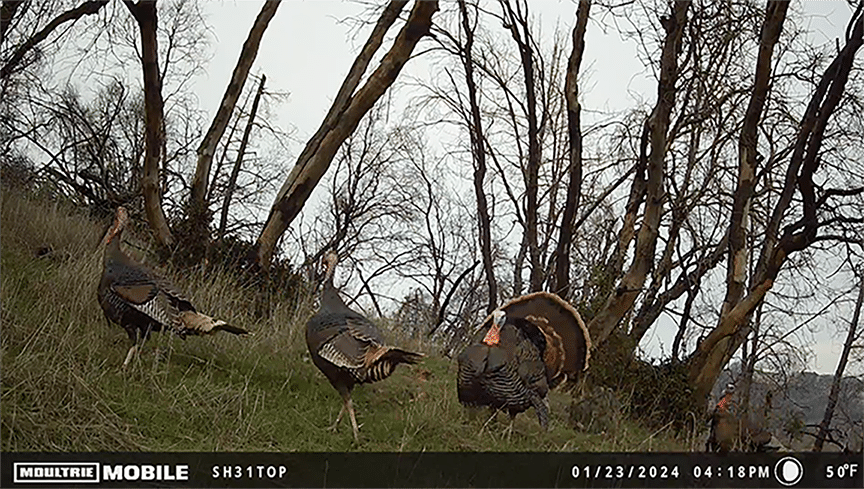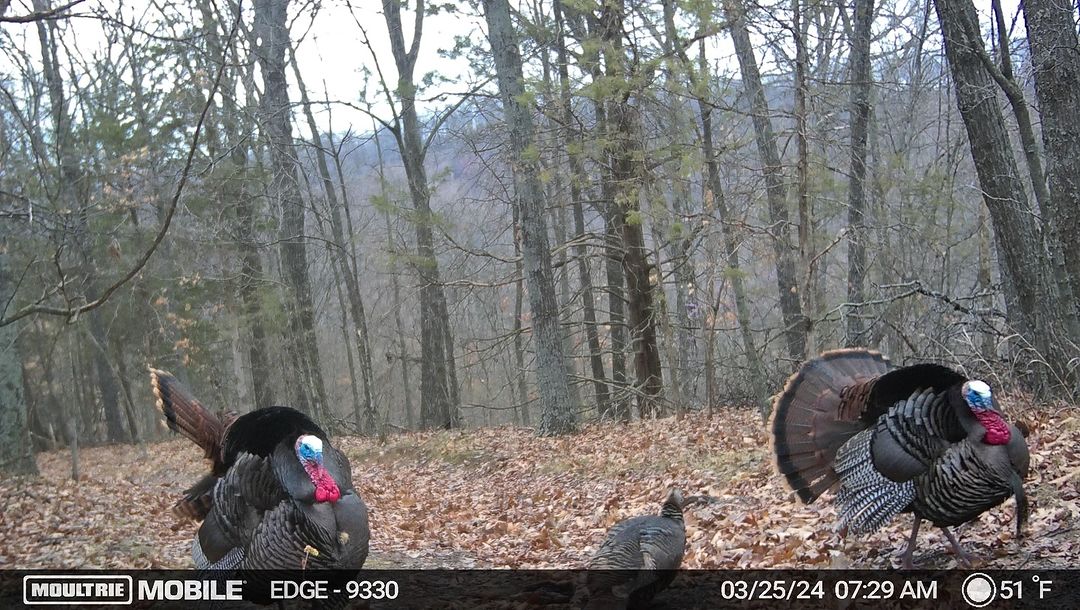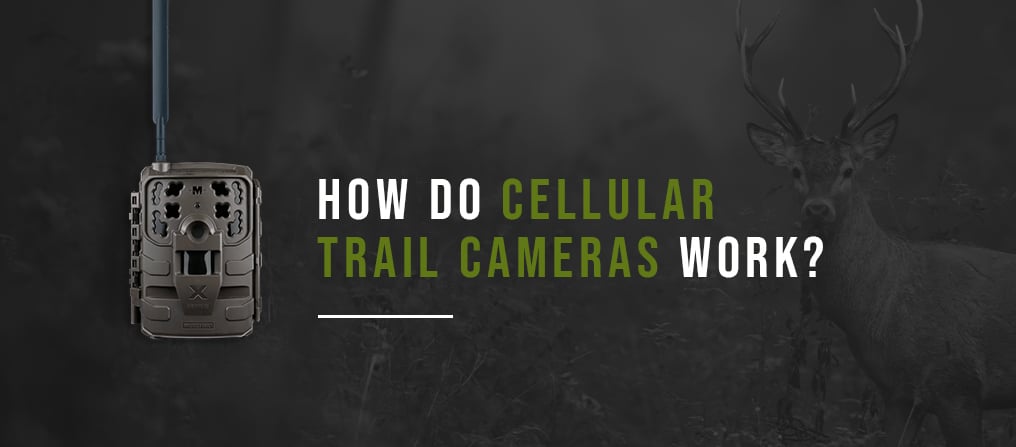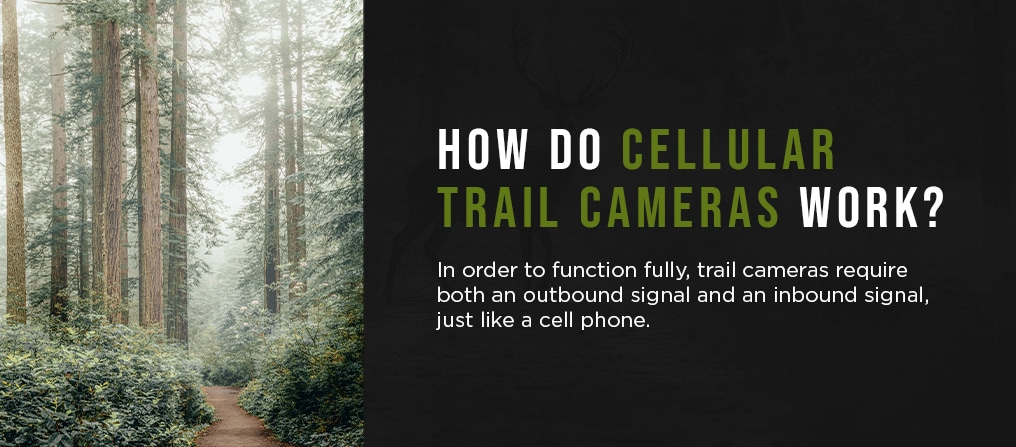How Do Cellular Trail Cameras Work?
A trail camera is a popular gadget for anyone who enjoys hunting, wildlife, nature and generally spending time outdoors. These cameras allow hunters and nature enthusiasts to capture images and track wildlife in the outdoors with minimal disruption to their natural activities. Individuals can use trail cameras to capture breathtaking images of animals for scouting purposes.
To get the most out of your trail camera, learn more about how they work, what they need to function and how they can enhance your outdoor activities.
What Is a Cellular Trail Camera?
A cellular trail camera, sometimes called a scouting camera or a game camera, is a specialized type of photography equipment designed to be used outdoors, often in remote locations.
The concept behind cellular trail cameras is relatively simple — place a trail camera in a location where you know wildlife to be active. As wildlife passes by, they will trigger the camera’s motion detector to capture an image. Then, using cellular connectivity, the cameras will transmit the image or images to a cloud-based server where it can be viewed from a connected device. As such, many hunters and game managers employ cellular trail cameras to find and identify potential animals to harvest.
Additionally, you can use cellular trail cameras for security purposes. By setting up a series of cellular trail cameras, you’ll know exactly when someone enters your property. If you keep animals like goats or chickens that you need to protect from predators, trail cameras can alert you to their presence, too.
How Does a Cellular Trail Camera Work?
Cellular trail cameras are two-way communication devices that function similarly to cell phones.
In order to function fully, trail cameras require both an outbound signal and an inbound signal, just like a cell phone. The strength of the camera’s signal will depend on proximity to the nearest cellular tower and any major impediments to the signal’s transmission, such as in heavily wooded areas. When a trail camera can’t connect to a strong cellular signal, it’ll revert to functioning the same way a traditional digital camera does — images will simply save to the device’s memory card.
Most cellular trail cameras rely on the global system for mobile (GSM) network. This means most cellular trail cameras will need a SIM card to connect to the network. Like with a cell phone, you’ll need to register and activate your trail camera’s SIM card with the mobile network of your choice.
Recently, trail camera manufacturers have begun to offer their own wireless services, which are tailor-made for trail cameras. One of the industry leaders in the trail camera market, Moultrie Mobile, offers wireless trail camera services. Choosing the right camera and the right wireless service for you will depend on a number of personal factors. The most important are likely your budget, desired camera functions and how often you plan to use your device.
Does a Cellular Trail Camera Need WiFi?
The simple answer is no. A cellular trail camera uses cellular connectivity to transmit images to a cloud-based system. If you want to view your pictures on your smart devices soon after they’re taken, you should ensure your camera can consistently connect to a cellular connection.
Do Cellular Trail Cameras Require a Subscription?
A cellular trail camera requires a subscription to connect to the wireless network of your choice. Similar to how your cell phone functions, you must register and connect your cameras to a wireless network using a SIM card so it can transmit images, videos and other content. In addition to the price of your trail camera, you’ll also pay monthly or annually for its cellular network plan.
How Much Do Cellular Trail Cameras Cost?
Like all electronic devices, the cost of a cellular trail camera can vary greatly, depending on the quality and complexity of the device. More complex options can include video recording capabilities, infrared flash and remote access. Some hunters might prefer to use more than one cellular trail camera to capture to keep up with the animals on their property.
At Moultrie Mobile, we offer cellular trail cameras at different prices that work perfectly for various needs, including hunting, security and more. It’s easy to connect your Moultrie Mobile camera to a Verizon 4G or AT&T 4G plan, so you can ensure your camera connects to the best networks on the market. In addition, many Moultrie Mobile cameras feature antennae and signal boosting features, making them even more effective and reliable.
Buy a Cellular Trail Camera From Moultrie Mobile Today
Moultrie Mobile’s dynamic, high-quality cellular game cameras are designed for hunting, but you can use them for many wilderness applications to take images in the wild. Moultrie Mobile offers a comprehensive product line of high-quality, high-value cellular cameras. Anyone from hunters to wildlife photographers are sure to find a product to suit their needs. To help make your setup even more impactful, check out our handy accessories.
Nearly all images your cameras capture will be accessible from your phone or computer from a convenient cloud-based storage system. The ease of tracking game and other wildlife from virtually anywhere is a possibility when you invest in our cameras and devices. Check out all of our cellular trail cameras and accessories to choose the best trail camera for your needs.
Contact us for a free demo today!


Featured
This venison lasagna features an easy meat sauce, layered with noodles and cheeses. The sweet Italian sausage complements the lean venison. It’s perfect for feeding a crowd at a potluck or family dinner.

Featured
If you are eager to take your turkey hunting knowledge to the next level, these tips will help you get the most out of your trail camera placements.

Featured
Wild turkeys are among America’s most hunted and popular game birds, tucking in with pheasants and waterfowl as the Birding Big 3. Turkeys and turkey hunters have some quirks that make hunting them more fun.





